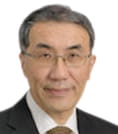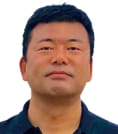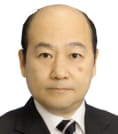- JST Home
- /
- Strategic Basic Research Programs
- /
 CREST
CREST- /
- Research Director/
- Computational Foundation/
- [Computational Foundation] Year Started : 2019
[Computational Foundation] Year Started : 2019
Hideharu Amano
Development of an integrated multi-node system for multi-access edge computing
Research Director
Hideharu Amano

Project Researcher
Graduate School of Engineering
The University of Tokyo
Collaborator
| Masahiro Iida | Professor Research and Education Institute for Semiconductors and Informatics Kumamoto University |
| Midori Sugaya(Shimazaki) | Professor Faculty of Engineering Shibaura Institute of Technology |
| Hiroaki Nishi | Professor Faculty of Science and Technology Keio University |
| Kazutosi Wakabayashi | Senior Fellow System Design Research Center The University of Tokyo |
Outline
Crust-core HUB is an integrated switch for ensuring the bandwidth and latency which combines a reconfigurable accelerator and a general-purpose processor. Connecting FPGAs and other domain-specific computers with Crust-core HUB, a powerful yet energy-efficient computing system is built for the future multi-access edge computing system. System software and design CAD for such a system are also developed, and the prototype system will be applied to the real smart city.
Isao Inoue
Platform for real-time learning at the edge with spiking neural networks
Research Director
Isao Inoue

Chief Senior Researcher
Research Institute of Advanced Electronics and Photonics
National Institute of Advanced Industrial Science and Technology
Collaborator
| Tetsuya Iizuka | Associate Professor Graduate School of Engineering The University of Tokyo |
| Kantaro Fujiwara | Project Associate Professor International Research Center for Neurointelligence The University of Tokyo |
| Yasushi Hotta | Asssoiate Professor Graduate School of Engineering University of Hyogo |
| Takeaki Yajima | Associate Professor Graduate School and Faculty of Information Science and Electrical Engineering Kyushu University |
Outline
Back-propagation (BP) of machine learning consumes immense energy for its enormous logic operations. On the other hand, the so-called “attractor formation”, in which firings of neurons of the spiking neural network (SNN) spontaneously converge to some specific loops, has the same function as BP does in the machine learning. With this intriguing feature, we are sure that we will be able to perform on-site ultra-low-power real-time learning/inference. Thus, in this project, we aim to corroborate this scenario by building the attractor SNN circuits consisting of our uniquely developed neuromorphic devices. The SNN circuits are implemented to a personal-authentication device. Finally, the device should learn and infer the unconscious behaviours of a human without accessing the internet nor consuming considerable energy.
Shigeo Sato
Fundamentals of spintronics-based edge computing hardware
Research Director
Shigeo Sato

Professor
Research Institute of Electrical Communication
Tohoku University
Collaborator
| Takahiro Hanyu | Professor Research Institute of Electrical Communication Tohoku University |
| Shunsuke Fukami | Professor Research Institute of Electrical Communication Tohoku University |
Outline
Towards the realization of Society 5.0, functionalities such as low-power consumption and real-time processing are required in edge computing systems. We therefore develop spintronic devices having non-volatile analog-storage functions and rich dynamics to meet these requirements and research analog-digital-mixed CMOS integrated circuit technologies to maximally utilize the aforementioned device characteristics. We also investigate the optimal hardware architecture for spintronics-based edge computing and finally identify the best way for the practical implementation of our hardware through experimental verifications.
Nozomu Togawa
Research on Ising Computation for Real-World Geographic Information Systems
Research Director
Nozomu Togawa

Professor
Faculty of Science and Engineering
Waseda University
Collaborator
| Toshinori Takayama | Expert Engineer Technical Division ZENRIN DataCom CO., LTD. |
Outline
In this project, we focus on geographic information applications, which are necessary for Society 5.0, and newly propose Ising programming for them. Firstly, we pick up variety of geographic information problems, including cyclic-route search problems as well as load packing problems with many types of constraints and represent them onto Ising models. After that, we embed these Ising models into practical Ising computers and finally solve real-sized geographic information problems with real types of constraints.
Naofumi Honma
Secure Information Processing Technology Based on Post-Quantum Encrypted Computing
Research Director
Naofumi Honma

Professor
Research Institute of Electrical Communication
Tohoku University
Collaborator
| Takashi Sato | Professor Graduate School of Informatics Kyoto University |
| Masanori Hashimoto | Professor Graduate School of Informatics Kyoto University |
| Yuichi Hayashi | Professor Graduate School of Science and Technology Nara Institute of Science and Technology |
Outline
This research project aims at studying the theory of secure information processing technologies that can execute secret computation based on post-quantum homomorphic encryption in a tamper-resistant manner with extremely high speed and high efficiency, and developing a secure secret computation platform that integrates the technologies. In addition, as new applications pioneered by the platform, we will develop those of secret statistical analysis and secret inference (that conceals input/output and learned parameters in machine learning) based on high-speed/high-efficiency secret computation.













